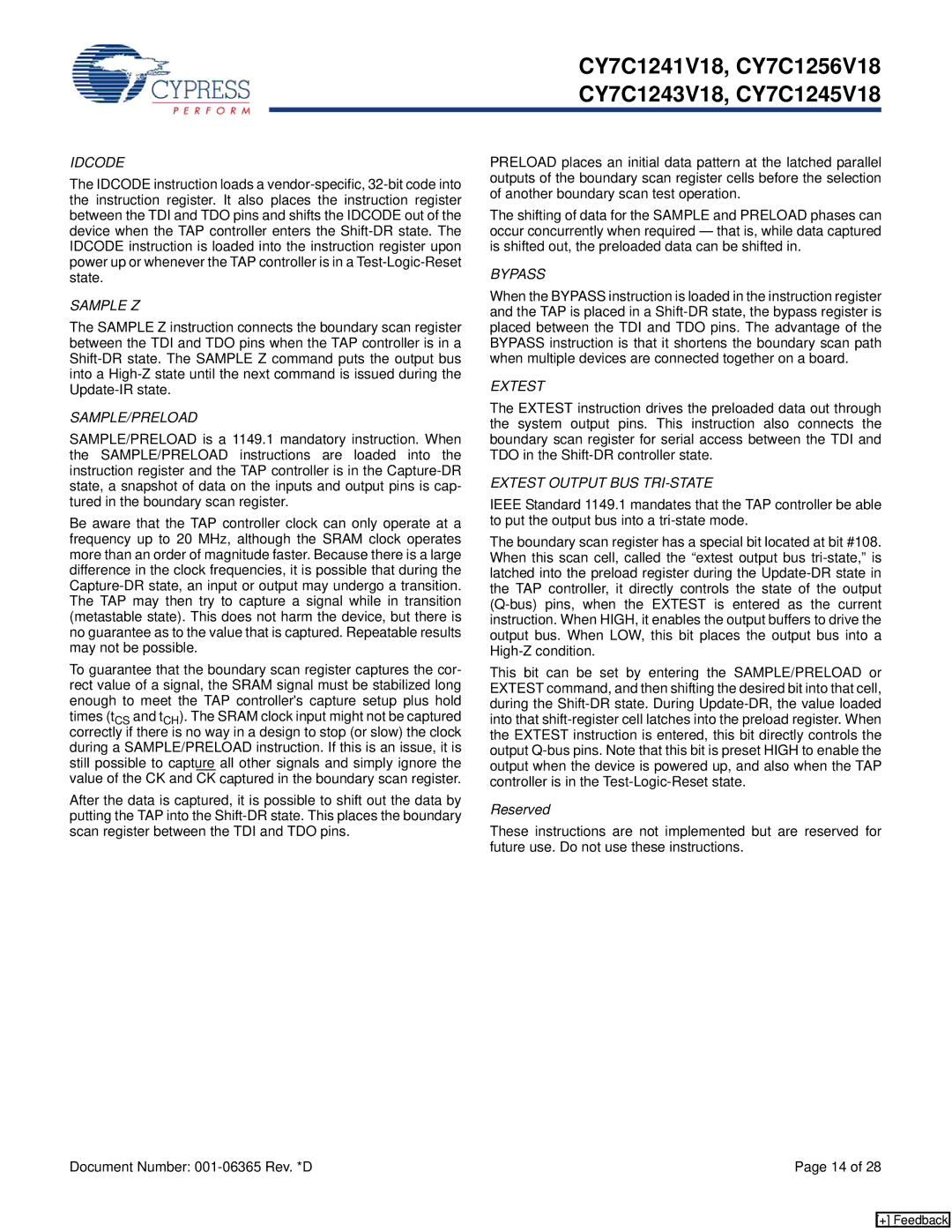
CY7C1241V18, CY7C1256V18 CY7C1243V18, CY7C1245V18
IDCODE
The IDCODE instruction loads a
SAMPLE Z
The SAMPLE Z instruction connects the boundary scan register between the TDI and TDO pins when the TAP controller is in a
SAMPLE/PRELOAD
SAMPLE/PRELOAD is a 1149.1 mandatory instruction. When the SAMPLE/PRELOAD instructions are loaded into the instruction register and the TAP controller is in the
Be aware that the TAP controller clock can only operate at a frequency up to 20 MHz, although the SRAM clock operates more than an order of magnitude faster. Because there is a large difference in the clock frequencies, it is possible that during the
To guarantee that the boundary scan register captures the cor- rect value of a signal, the SRAM signal must be stabilized long enough to meet the TAP controller's capture setup plus hold times (tCS and tCH). The SRAM clock input might not be captured correctly if there is no way in a design to stop (or slow) the clock during a SAMPLE/PRELOAD instruction. If this is an issue, it is still possible to capture all other signals and simply ignore the value of the CK and CK captured in the boundary scan register.
After the data is captured, it is possible to shift out the data by putting the TAP into the
PRELOAD places an initial data pattern at the latched parallel outputs of the boundary scan register cells before the selection of another boundary scan test operation.
The shifting of data for the SAMPLE and PRELOAD phases can occur concurrently when required — that is, while data captured is shifted out, the preloaded data can be shifted in.
BYPASS
When the BYPASS instruction is loaded in the instruction register and the TAP is placed in a
EXTEST
The EXTEST instruction drives the preloaded data out through the system output pins. This instruction also connects the boundary scan register for serial access between the TDI and TDO in the
EXTEST OUTPUT BUS TRI-STATE
IEEE Standard 1149.1 mandates that the TAP controller be able to put the output bus into a
The boundary scan register has a special bit located at bit #108. When this scan cell, called the “extest output bus
This bit can be set by entering the SAMPLE/PRELOAD or EXTEST command, and then shifting the desired bit into that cell, during the
Reserved
These instructions are not implemented but are reserved for future use. Do not use these instructions.
Document Number: | Page 14 of 28 |
[+] Feedback
